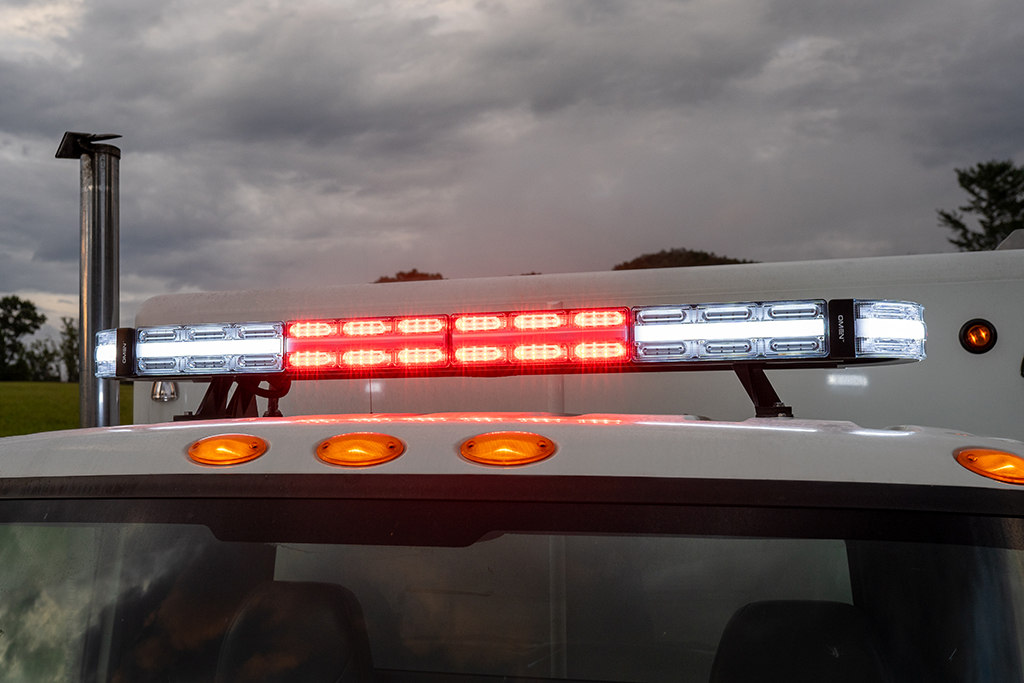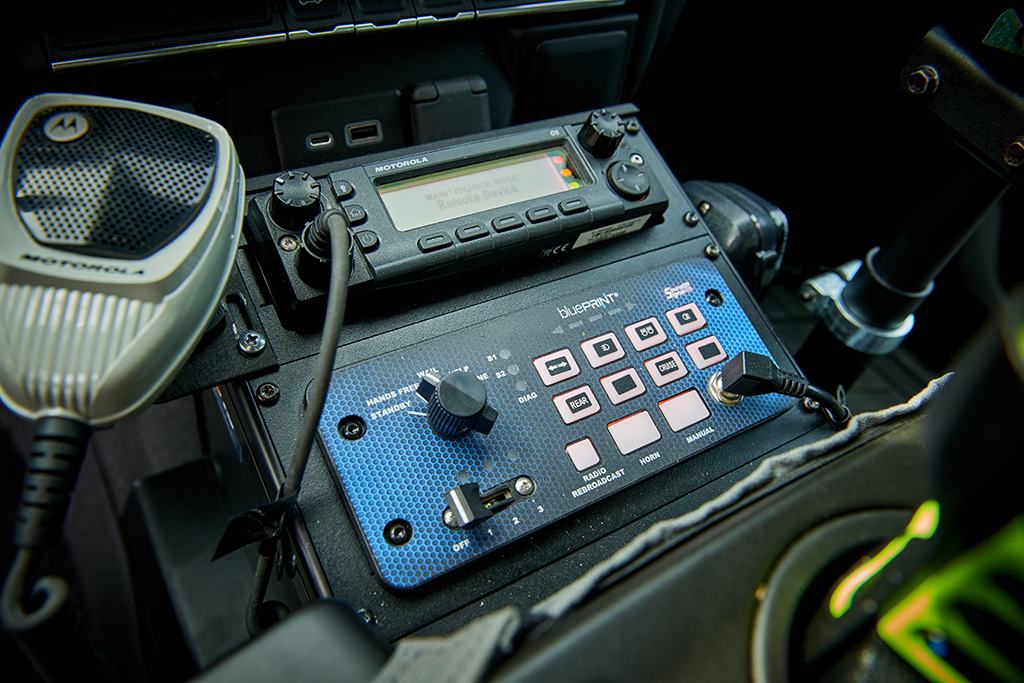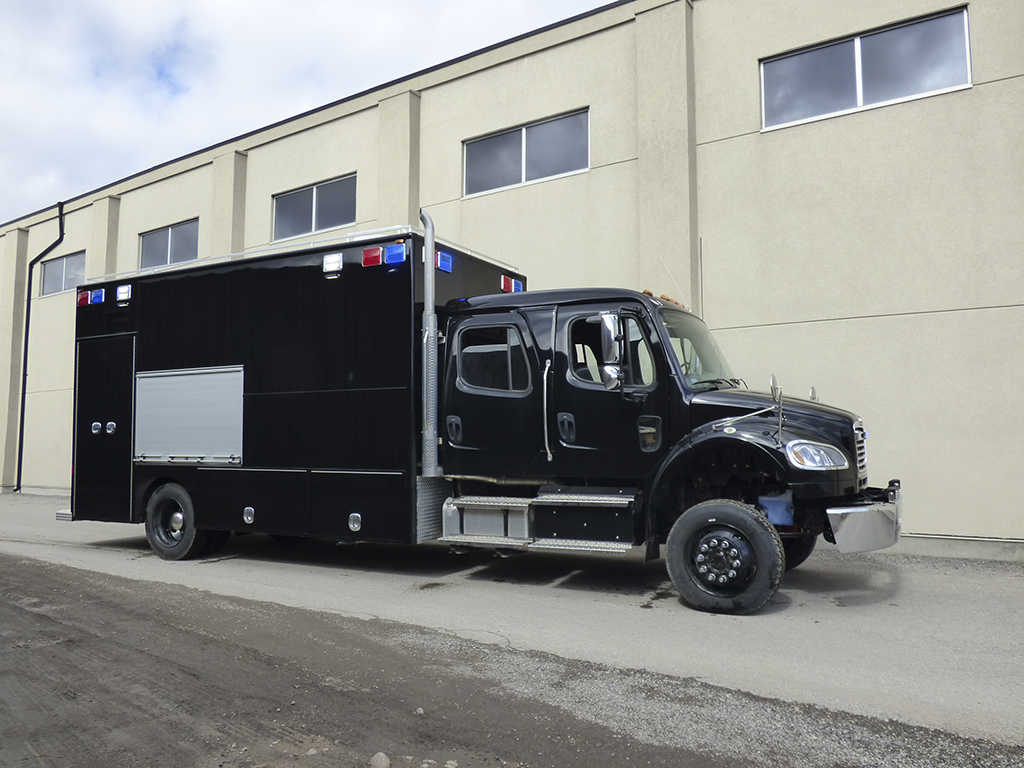LED lighting has taken the fire service by storm, virtually replacing every other form of lighting on fire apparatus. LED technology continues to offer features such as programmable flashing, colors, patterns and intensities; combination spot and flood light abilities; and several other technological advances that can be deployed depending on situational needs.
Jon Sestrom, product manager for Whelen Engineering Co., says the company’s CenCom Core® control systems enhance first responder safety by offering advanced automation, remote connectivity, and true system synchronization through WeCanX., a CAN-based communication system. “The Core system allows us to control what the products that have LEDs can do,” Sestrom points out, “by creating scenarios for the LEDs to communicate to the public.”
He notes that the Core system features Situation-Based Integration and Events. With Situation-Based Integration, scene-specific functions can be created and automated by using various vehicle components and signals, like automatically turning off a siren when a vehicle arrives on scene. With Events, multiple user-defined rules can be created for specific situations depending on the state of your vehicle, like automatically switching to Dynamic Variable Intensity™ (DVI) light patterns when the vehicle is in Park.
Sestrom says that a calm scene is a safe scene. Using Whelen’s V2V Sync, the Core system will automatically synchronize lights and tones on vehicles within any proximity to aid approaching motorists, and when on scene it will synchronize emergency lighting on all the vehicles that have responded.
“Illumination is another big issue with LEDs,” Sestrom says. “Our photometric design team has designed optics and reflectors that take the light output from LEDs, collect it, reorganize it, and direct it, focusing the light where it’s needed whether it be near field, far field, or a combination of the two.” He adds that the Core system can ramp up how LED lights turn on, turningthem up slowly so there’s no shock to the eyes. That technology is used in Whelen’s M series and 100 series scene lights, says Sestrom.

Jason Witmier, director of education and technology for Safe Fleet, says its FRC division introduced a new generation of its Focus line. The Radiant Max and Radiant Lux bend light through the fixture’s lens toward the ground directly in front of an apparatus and then gradually drop down to as far as 100 feet away. “It’s not about putting out the brightest light; it’s about getting the light into the area that’s most effective,” Witmier says. “It’s all about what you want to achieve with the number of lumens you’re using. You have to think of the application of the light, whether it’s to light up the ground around the rig or the distance down a street.”
Lou Zara, FRC product manager, says that FRC’s Signature series includes the Radiant Lux, a CAN-Bus-controlled LED that can be controlled by FRC’s OmniPlex multiplex system. Using OmniPlex, the operator can turn on spotlights individually, floodlights individually, or both simultaneously; control their intensity by dimming or making them brighter; and flash the lights in different patterns, Zara says. “We have amber integrated into our LEDs that gives us a warm function—acombination of white and amber LEDs that can be changed from low to medium to high intensity,” he adds.

Sam Massa, president of HiViz LED Lighting, says customers have asked his company how to reduce the lighting chaos on fire scenes, inquiring about syncing, modes, brightness, and flashing patterns. “Today we’re seeing a transition back to central controllers,” Massa points out. “So, we designed a smart system that uses distributed electrical architecture and the existing J1939 CAM electrical system on the apparatus to carry light data. We chose to give the configuration control back to the end user and created five color parts that have a single part number per size. This reduces complexity, speeds up install time, and allows apparatus makers to standardize on hardware while giving the customer infinite configurability in software after the sale.”

HiViz Connect™ is a communication protocol that enables smart features in HiViz’s new HVC warning lights, such as advanced flash pattern programming, multivehicle synchronization, active load management that dims lights if the electrical system capacity is exceeded, automatic systemwide night mode, and integrated digital alerting that transmits data into the HAAS Alert Safety Cloud®.






Massa says HiViz also makes the FireTech OMEN™ warning light bar that’s designed with a modern exoskeleton and multicolor modules to reduce complexity and eliminate the need for a department to configure the light. OMEN uses two optical sensors to calculate daylight and nighttime light modes and is global to all fixtures connected to the system so all are set automatically.
Gabe Casucci, national manager of fire and EMS for Sound Off Signal, says his company’s patented line of silicone lights is a big advance in lighting technology. The mpower™ family LED lights are one-piece units molded with a silicone housing, optic, and weather seal to provide extreme durability, a compact design, and improved reliability by reducing the number of separate parts, Casucci says. “Additionally, mpower products are equipped with up to tricolor capability,” he continues. “Their higher heat point makes them great for use in high-temperature and high-humidity areas, and they are highly resistant to ultraviolet (UV) light and most hard chemicals, actually becoming clearer when exposed to sunlight.”
Casucci says the mpower lights can be controlled through Sound Off Signal’s blue- PRINT® Control System, which can be run off a multiplex screen or programmed into point-to-point contacts. The system can synchronize lighting on all emergency vehicles at a scene, slow down the pattern of lights to bring firefighter adrenaline down, and adjust the intensity of the lights.
Charlie Gerds, national sales manager for TecNiq Inc., notes his company makes the K series of LED emergency lighting. “The series has great heat dissipation and are very thin lights that fit flush against the side of an apparatus,” Gerds points out. “Using our AutoSynch technology, all the flashers are synchronized without requiring a separate control box.” The lights have a durable impact-resistant lens and offer excellent UV resistance. K series lights are made in 5- by 3.3-, 5- by 2-, 6- by 4-, 7- by 3-, and 9- by 7-inch sizes.
ALAN M. PETRILLO is a Tucson, Arizona-based journalist, the author of three novels and five nonfiction books, and a member of the Fire Apparatus & Emergency Equipment Editorial Advisory Board. He served 22 years with the Verdoy (NY) Fire Department, including in the position of chief.

